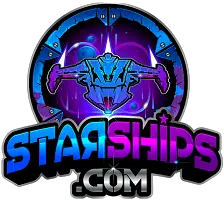

Star Trek Ship Names Ordered by Class – From TOS to Picard
By: Author Brad Burnie
Posted on Published: September 23, 2021 - Last updated: November 9, 2022
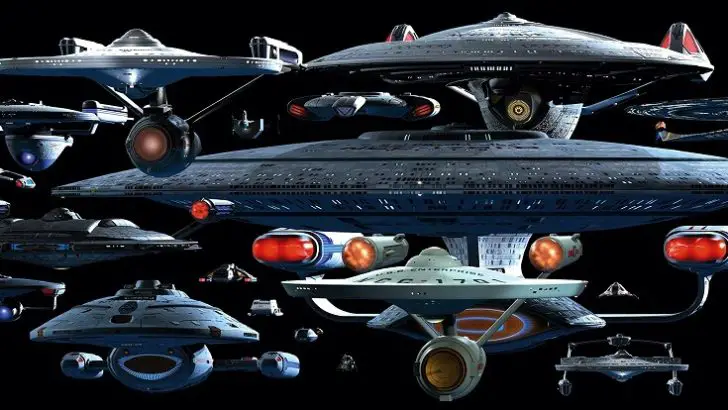
Share the Universe!
For those who consider themselves as die-hard fans of the popular sci-fi Star Trek universe, you may already know that Star Trek’s 24 th century has some astounding array of Starfleet ships that we can stare at with admiration. Star Trek has had strong starships designs since the very beginning. Let’s dig a bit deeper to know more.
The history of Star Trek dates back to 1966-1967 with The Original Series Season 1. All this began when a writer and former Air Force pilot, Gene Roddenberry , wanted to make a science fiction TV show that featured characters that show humanity at its best.
Since then, there has been no looking back as Star Trek has become one of the most popular sci-fi television shows of all time. While it has been entertaining its audience for decades and is globally known for its genre of science fiction, it’s also known for it’s the great space battles with different alien species.
Over the years, the show came up with dozens of iconic starship designs, many of which are even known to people who don’t follow Star Trek. The idea behind the creation of these ships was to represent the diversity of various races, cultures, and factions. So, whether it’s the TOS ( The Original Series ), Star Trek: The Next Generation (TNG) , Deep Space Nine (DS9), Voyager, or Picard , the show has always lived up to the expectation of producing some vast fleets that demonstrated the abilities at their best.
If you have to rank these astonishing ships, what do you think? Which are the most powerful ships of all? Not sure about the answer? No problem, here we are, revealing a list of 30 most powerful Star Trek ship names today.
From TOS to Picard, we’ve covered and presented some of the powerful Star Trek ships . Their rankings are based on specifications, including speed, size, and power. So, are you ready and excited to know their names? Let’s begin!
See awesome great details in this book Ships of the Line on amazon.
List of Powerful Star Trek Ship Names Revealed
30. ss botany bay.
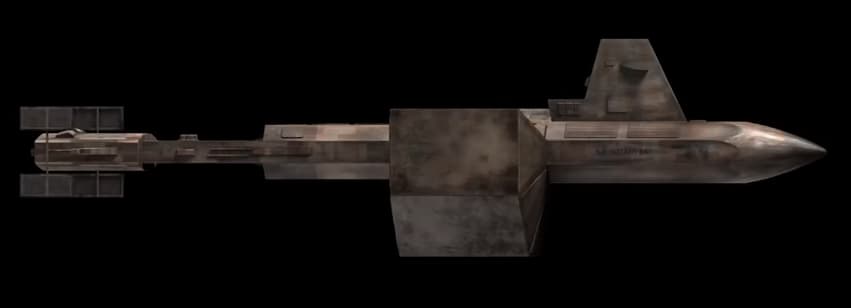
Built in the late 20 th century by the United States of America, this DY-100-class sleeper ship played a great role in helping Khan Noonien Singh and his group to escape Earth after being defeated at Eugenics Wars . You can explore the nuclear power of this ship and know more about it by watching the prime timeline of Star Trek – TOS.
29. Phoenix
Phoenix, an Earth spaceship, was constructed during the mid-21 st century. The interesting fact about this ship is that it used to be a nuclear missile. Yes, Lily Sloane and Zefram Cochrane later converted this missile into a prototype spaceship. Isn’t it amazing? That’s not it; it is also known to be the first human-made spacecraft launched from Earth to travel faster than the speed of light by using warp-drive technology.
28. Friendship 1
You will come across this Star Trek ship name in a Star Trek: Voyager episode. Launched in 2067 by the United Earth Space Probe Agency, four years after the Phoenix’s game-changing flight, this deep space probe came to find other species. The Friendship 1 ship’s exquisite feature is that it contained a lot of scientific, technological, and cultural information that helped to seek out new worlds and new civilizations.
27. USS Enterprise (NCC-1701-J)
You can get a glimpse of this starship in the “Azati Prime” – The Star Trek: Enterprise episode. It bags one of the top spots in the list as it boasts some of the advanced technologies. However, it is not that popular due to two reasons – one, it just has a brief glimpse, and second, a time-traveling Captain said that the Enterprise-J exists in a possible future timeline.
26. Galileo (NCC-1701-7)
Assigned to the USS Enterprise in the 2260s, Galileo was a Class F shuttlecraft and bore the name of the great astronomer and mathematician of all time. They first used a telescope – Galileo Galilei. However, this craft was lost near Taurus II in 2267, at the time of the Murasaki Effect investigation. It was then replaced with the same numbered craft that was dubbed as the ‘Galileo II.’
25. USS Raven (NAR-32450)
This Federation exploration vessel was the home and the workplace of Magnus and Erin Hansen, the Borg-studying scientists. Check out its remains in the Star Trek: Voyager episode, “The Raven.”
24. Deep Space Nine
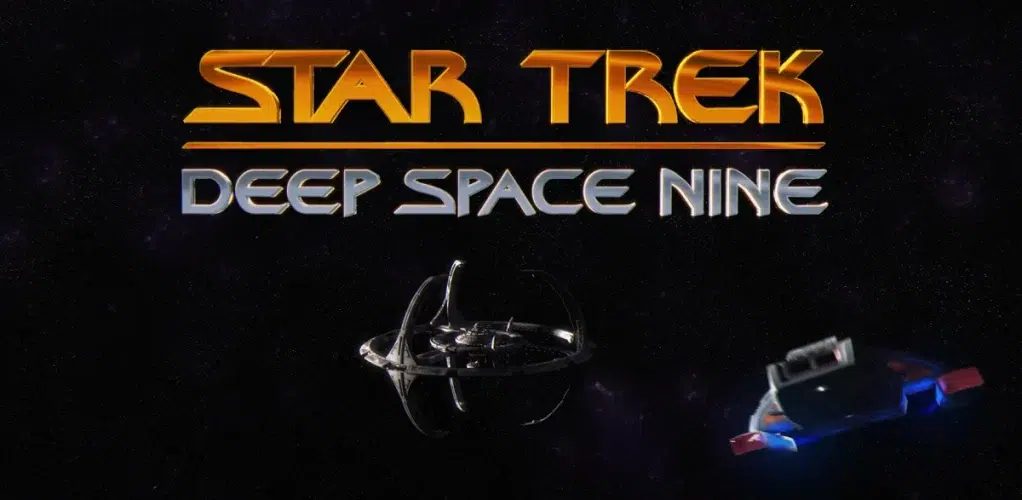
While this isn’t technically a ship, its a space station, we though it was important to include. There are two sides to this. On one side, it is simply an old Cardassian mining station for the same-titled TV series. While on the other hand, the same mining station is modified and reconstructed into a battle station with 5,000 photon torpedoes in Deep Space Nine – Season 4 of Star Trek.
23. USS Defiant (NX-74205)
Built for Borg battles, this amazing Federation craft was armed with a cloaking device that was lent from the Romulan Star Empire. It is known to be one of the successful warships that you can see for yourself in Star Trek: Deep Space Nin e as well as Star Trek: First Contact . Also know for it’s “mining” capabilities in games.
22. La Sirena
Memory Alpha states that this newcomer Star Trek ship is a Kaplan F17 Speed Freighter, a class of civilian ships equipped with phasers and shields but a whole lot of hologram capacities. Not to forget, it is the only entry from Star Trek: Picard.
21. USS Franklin (NX-326)
This ship is small, but at the same time, tough, just like other Freedom-class starships. You can see this 22 nd -century ship in the Kelvin timeline of Star Trek: Beyond, seat belts. It is equipped with stealth technology, cannons, and torpedoes, and its warp four power was used to get to the Starbase Yorktown from the planet, Altamid .
20. Enterprise (NX-01)
In the 22nd century of Star Trek: Enterprise , you can see how this starship has the potential to carry a huge crew of almost 100 people. It is remembered as a victory of Zefram Cochrane’s theories of space travel.
19. Sh’Raan
Even though the Vulcans are known better than combat ships for logic, the pre-Federation years have seen Spock’s forerunners ready to throw down in Sh’Raan – the Star Trek: Enterprise -era starship that was capable of Warp 7 power.
18. USS Shenzhou (NCC-1227)
This Walker-class Federation USS starship was introduced in the 23 rd century, and you can see it in Star Trek: Discovery. It had everything, including phasers, cannons, and torpedoes, but unfortunately, it got smashed in the Battle of the Binary Stars that occurred in 2256.
17. Sarcophagus
Bigger than the Shenzhou, Klingon starship of the 23rd-century can be witnessed in the Star Trek: Discovery pilot. One interesting feature of the Sarcophagus is that its armor contains the remains of Klingon warriors in the form of a patchwork of caskets.
16. Jem’Hadar Warship
Simply put, it’s all interconnected when we talk about this warship. The story of Star Trek: Deep Space Nine is incomplete without the Dominion, and the story of Dominion is incomplete without the Jem’Hadar warship, i.e., its military division.
15. USS Prometheus (NCC-71201)
This Nebula-class Federation USS starship is in Star Trek: Deep Space Nine . It was introduced as a floating science trial. It not only gets the job done but is also famous for its magnificent goal of reigniting a dead sun.
14. USS Excelsior (NX-2000)
It is featured in Star Trek VI: The Undiscovered Country as the first Federation starship having trans-warp drive. This 23rd-century ship was operated by Starfleet and served Captain Hikaru Sulu , who commanded the Excelsior from 2290 to at least 2320.
13. D7-class Battle Cruiser
This Klingon starship is considered the largest of its era as it was 748 feet long and had 430 crew members. Although many other cooler introductions came along in the 24 th century, this starship still holds a higher rank. It is also termed as ‘ the pinnacle of combat warships in the 23rd century ’ as per StarTrek.com.
12. Scimitar
This Reman-made ship boasts about a lot of things. Featuring in Star Trek: Nemesis , it is loaded with photon-torpedo bays and disruptor banks. Additionally, Scimitar can convert itself into a Thalaron weapon. It is similar to a nuclear weapon but has far more destructive attributes than the latter.
11. Vor’Cha-class Attack Cruiser
This was yet another heavily armed Klingon starship used during the middle and later part of the 24 th century. It was almost as long as a Galaxy-class Federation craft and was similarly used as the backbone of the Klingon-Cardassian Alliance fleet in the mirror universe.
10. USS Enterprise (NCC-1701-A)
Have you seen the original iconic Enterprise? USS Enterprise (NCC-1701-A) is a Constitution-class starship that is essentially a replica of it. It was first featured in the prime timeline of Star Trek IV: The Voyage Home . Additionally, it also appears in the Kelvin timeline of the J.J. Abrams-era Star Trek films.
9. USS Enterprise (NCC-1701-B)
USS Enterprise-B is a polished version of the prime timeline’s Constitution-class Enterprise. This Excelsior-class Federation starship was introduced in the 23rd century and can be seen in Star Trek Generations .
8. USS Enterprise (NCC-1701), Prime Timeline
The USS Enterprise (NCC-1701) was a 23rd century Federation Constitution-class starship launched in 2258. Officially Federation was a flagship, this starship was operated by Starfleet. Unfortunately, it was destroyed during the planet Altamid battle in 2263.
7. USS Enterprise (NCC-1701), Kelvin Timeline
This starship was introduced in the 23rd century, so it has the potential of more than warp 8. In fact, it became the first Federation starship to start a five-year mission under the command of Captain James T. Kirk . It is said to be more than double the size of the Prime Timeline’s Enterprise.
6. Romulan Warbird
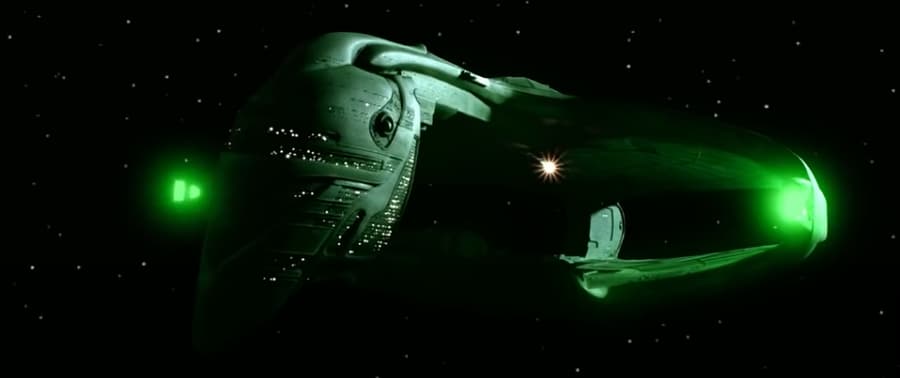
Captain Jean-Luc Picard and the crew were awestruck by this Romulan Warbird for obvious reasons in Star Trek: The Next Generation . According to StarTrek.com, it is considered to be the largest and the most powerful Romulan spacecraft.
5. Negh’Var Warship
Negh’Var Warship was the largest class of starship, running more than 2,250 massive feet long. This powerful starship was operated as the emperor’s flagship in the Klingon Empire during the late 24 th century.
4. USS Vengeance
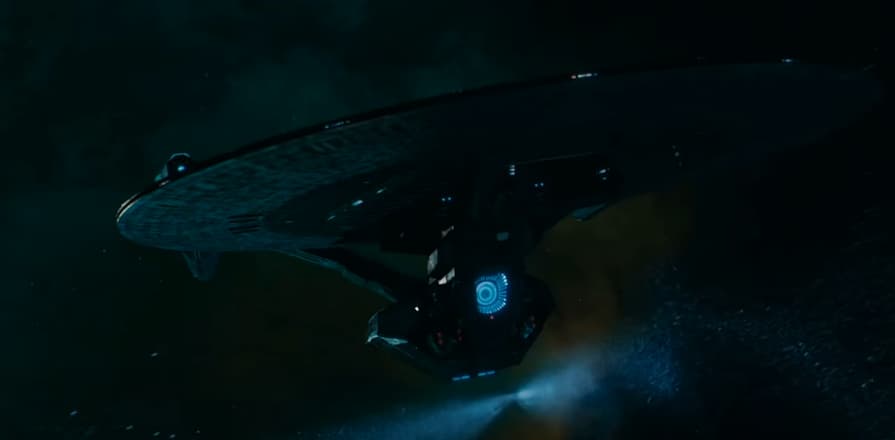
Designed and developed by Khan Noonien Singh and Section 31, Star Trek: Into Darkness reveals how scary this 23rd-century starship is. From Star Trek’s Kelvin timeline, this ship was specifically created for combat and was commissioned in 2259. It has very assassin type feel.
3. The Whale Probe
You cannot stop boasting about the exquisite features of this starship – the Whale Probe. Featured in the Star Trek IV: The Voyage Home , defeating it is out of the question as it is a massive, power-sucking, starship-disabling, and ocean-vaporizing craft that visited Earth in 2286 to contact members of the humpback whale species.
2. Xindi Probe

We can define this starship as a pure beam of destructive force. Seen in Star Trek: Enterprise, this Xindi Probe not only attacked Earth in the 22nd century but also successfully killed more than 7 million people from Florida to Venezuela leaving complete destruction in it’s wake.
Nomad starship was designed by Dr. Jackson Roykirk and served in the first part of the 21st century. It was created with two goals: to create a ship that could function as an accurate thinking machine while using logic and find new lifeforms in interstellar space. This powerful starship had the potential to clear out at least 4 billion people from four different planets. You can see how Captain Kirk and his team face it in the Star Trek TOS episode, The Changeling.

Wrapping It Up
See awesome great details in this book Ships of the Line on amazon . There are more powerful Star Trek ships in addition to this list. The Doomsday Machine, the Krenim Temporal Weapon Ship , the Species 8472 bioship , the Narada , the Borg Cube , and V’Ger are undoubtedly powerful Star Trek ships featured in different timelines. The high-tech development and their powerful specifications have made them the most powerful ships of the Star Trek era.
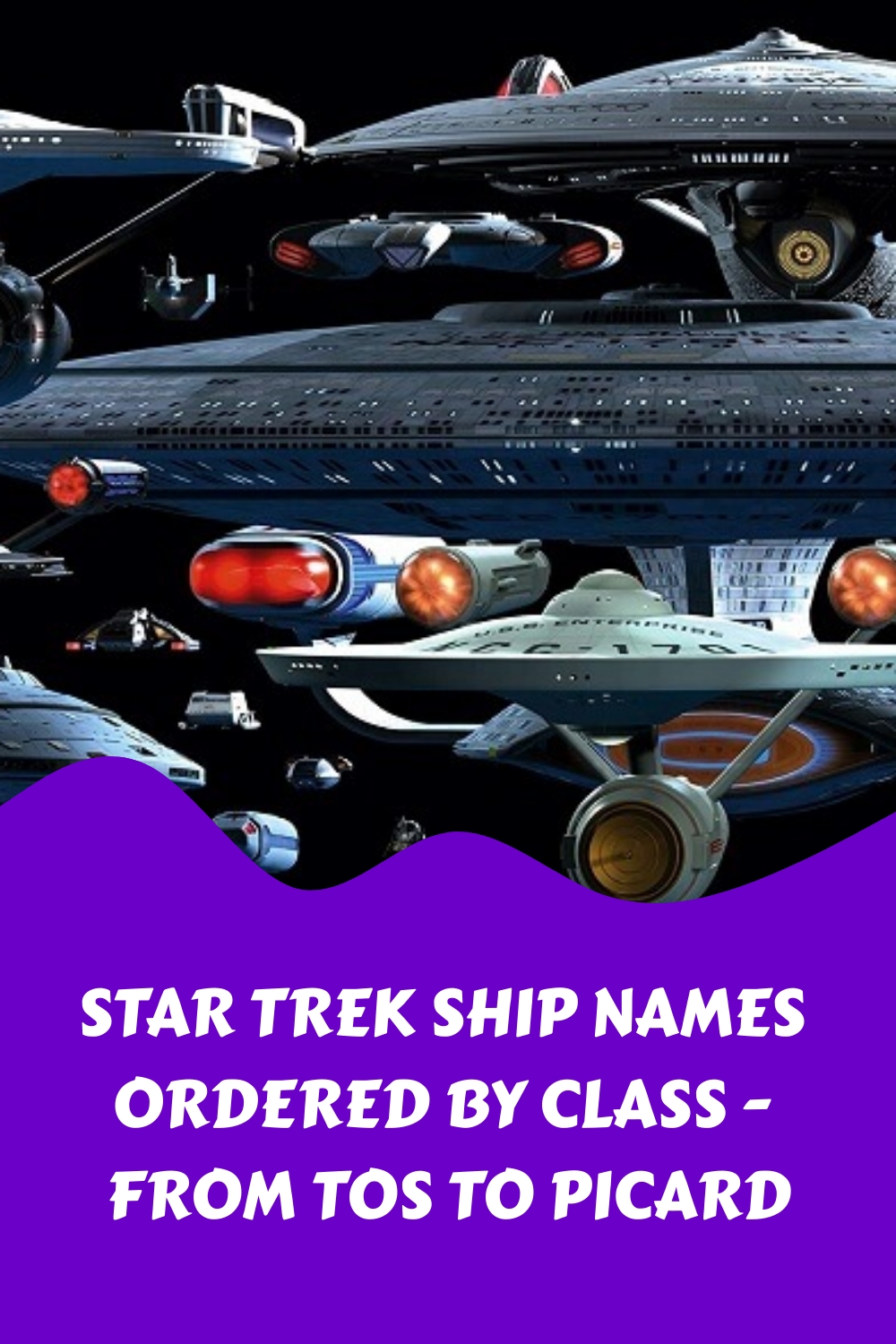
Brad Burnie is the founder of Starships.com. He loves all video game genres. In his spare time, he loves reading, watching movies, and gaming
- More to Explore
- Series & Movies
Published Jul 5, 2021
The Fleet's In: 24th Century Federation Starships
Does your favorite ship make the cut?
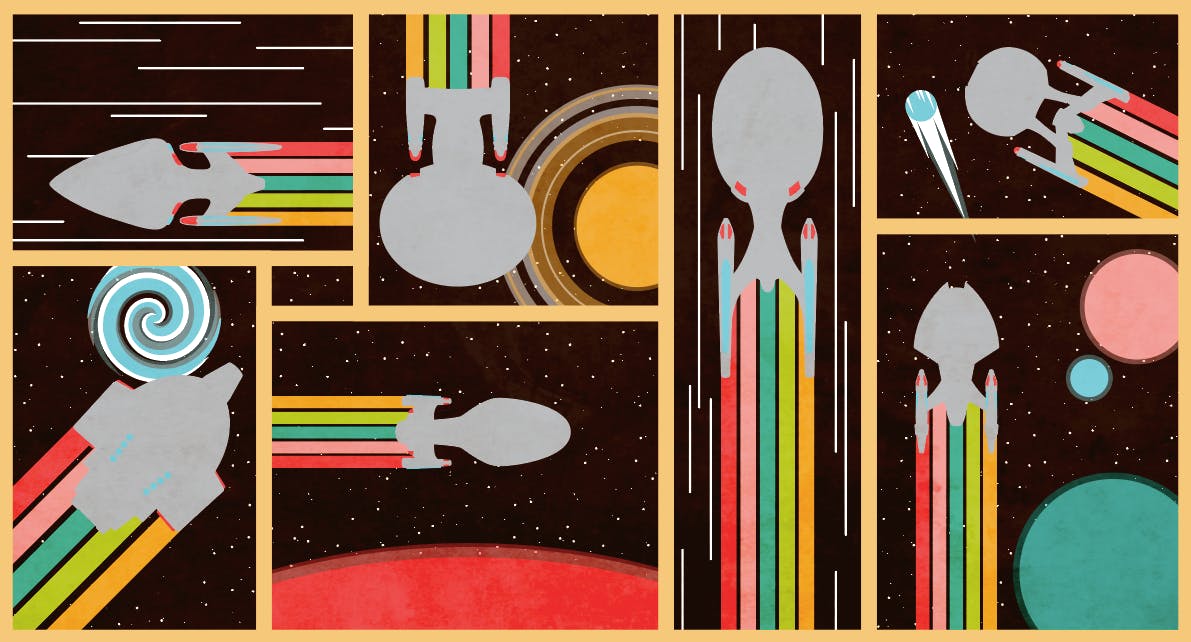
StarTrek.com
For those of us who lovingly refer to ourselves as “starship nerds,” Star Trek 's 24th century is populated with an astounding array of Starfleet vessels for us to gaze upon with awe. The series and films set in this era, namely Star Trek: The Next Generation , Star Trek: Deep Space Nine , Star Trek: Voyager , Star Trek: Picard , and the four movies helmed by the TNG crew, produced vast fleets that demonstrated the Federation's prestigious shipbuilding capabilities.
Narrowing down choices, and ranking my favorites proved difficult enough, so we have excluded 23rd century holdovers (so no Excelsior -, Miranda -, Constellation -, and Oberth -class staples), non-Starfleet vessels such as Ambassador Spock's craft from Star Trek (2009) , the relatively diminutive Danube -class runabouts, and auxiliary shuttles. With that in mind, let's take a look at the ships that have been deployed from Utopia Planitia, Riverside, Beta Antares, Eridani A, and other Federation fleet yards.
10. Nova -class in Voyager

When the Nova -class U.S.S. Equinox first popped up on U.S.S. Voyager 's sensors in “Equinox,” Captain Janeway noted that the starship was a planetary research vessel designed for scientific missions rather than long-range tactical excursions. The Nova -class bore streamlined similarities to its larger Intrepid and Sovereign -class cousins, but its limited scope and small crew left it vulnerable to a lonely jaunt through the Delta Quadrant. If Captain Ransom had commanded a sturdier vessel, perhaps he would not have resorted to the deplorable tactics he employed to find a faster route home. However, the design apparently stood an excellent chance of enduring, as Captain Harry Kim sat in the center seat aboard the Nova -class variant U.S.S. Rhode Island in the alternate future seen in “Endgame.”
9. Ambassador -class in The Next Generation and Deep Space Nine

The U.S.S. Enterprise-C remains the most well known Ambassador -class vessel due to its namesake, its prominence in the classic “Yesterday's Enterprise,” and its valiant rescue of the Klingon outpost on Narendra III from Romulan aggressors. Variants of this starship also notably appeared in Captain Picard's blockade during the Klingon Civil War, at the Battle of Wolf 359, and as a transport in “Data's Day.” The explorer's design proved to be an elegant mid-point between its Excelsior -class predecessors and Galaxy -class successors, and it would have been wonderful to see the vessel show up on a more frequent basis.
8. Prometheus -class in Voyager
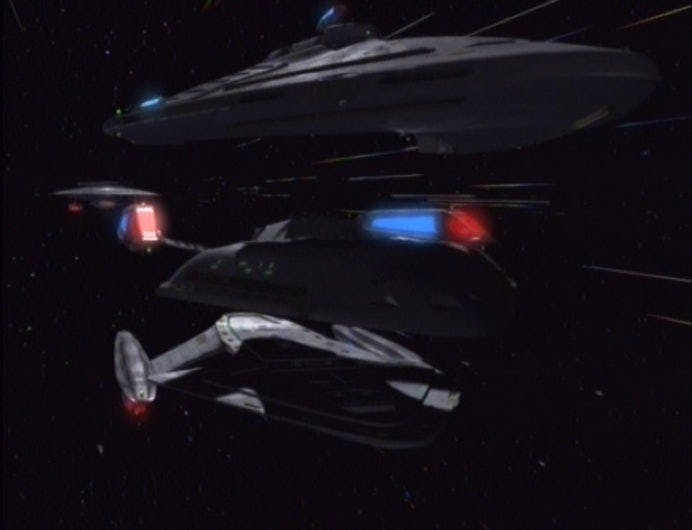
Who can forget the stunning sight of the prototype U.S.S. Prometheus becoming three independent vessels as it separated into multi-vector assault mode during “Message in a Bottle?” The Prometheus 's computer and resident EMH informed Voyager 's doctor that the advanced ship was intended for deep space tactical assignments and could achieve speeds faster than any other member of the fleet. The pair of holographic physicians managed to wrest control of the Prometheus from Romulan hands and deploy its experimental defensive systems against Tal Shiar warbirds. While it is unknown if further Prometheus -class ships were constructed, the prototype was spotted again as part of the armada sent to intercept the Borg sphere in “Endgame.”
Star Trek Ships of the Line — U.S.S. Prometheus
7. Akira -class in Star Trek: First Contact , Deep Space Nine , and Voyager
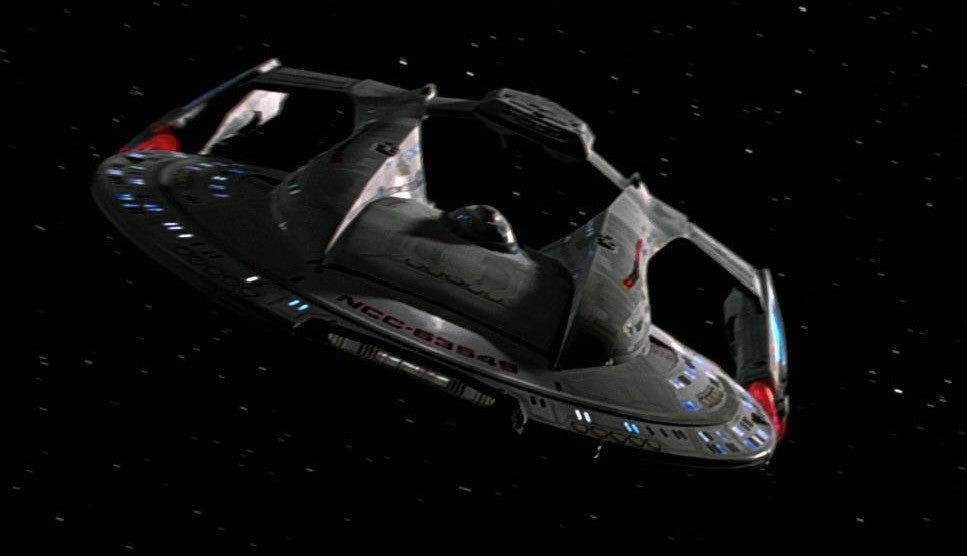
First seen on screen in the Battle of Sector 001, the Akira -class's earliest chronological appearance occurred during a flashback at the Utopia Planitia shipyards in the Voyager episode “Relativity.” While no single starship of this design ever received an excessive amount of attention, numerous Akira -class vessels substantiated their worth in battle during the height of the Dominion War. From retaking Deep Space 9 in “Sacrifice of Angels” to assaulting Cardassia in “What You Leave Behind,” these resilient craft evidently became an instrumental element in Starfleet's defense forces by the end of the 2370s.
6. Inquiry -class in Picard
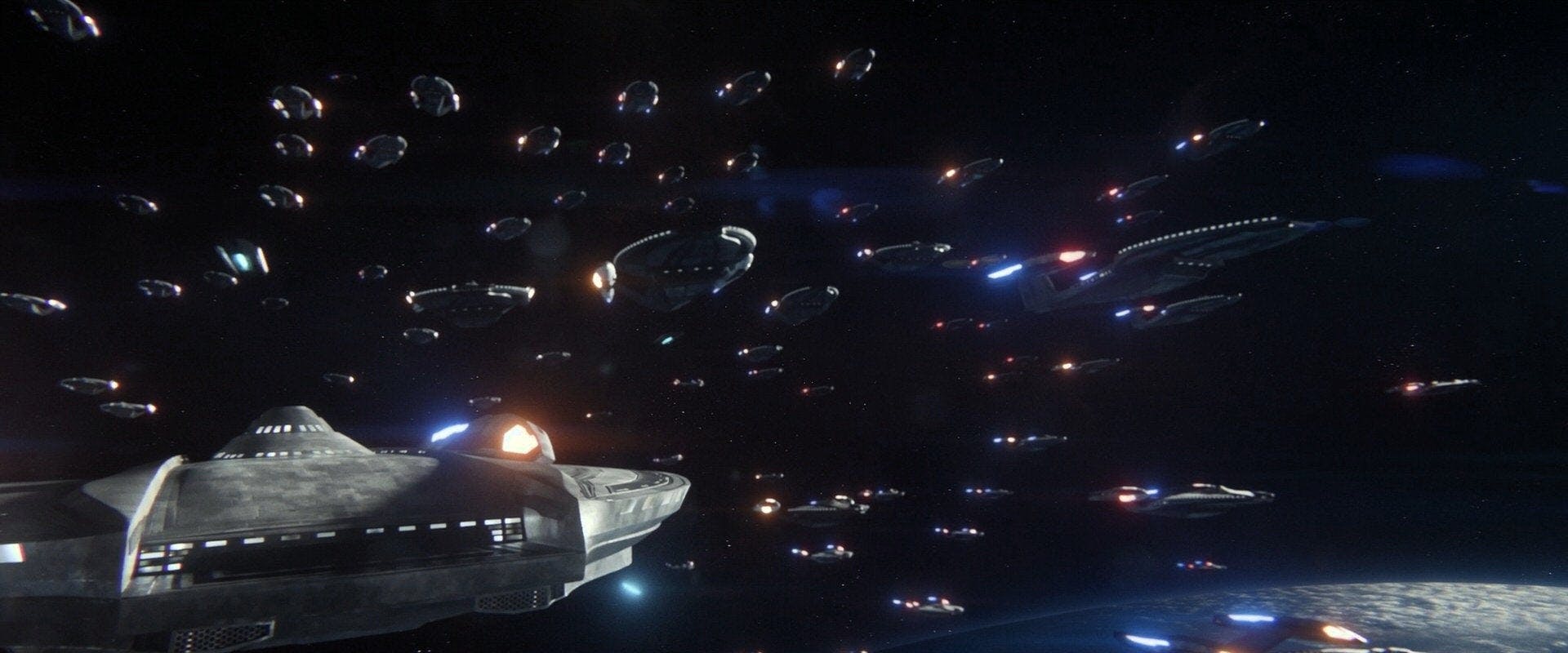
The imposing task force led by Captain Riker above Coppelius was composed of Inquiry-class vessels, including Riker's own U.S.S. Zheng He . Representing the most up-to-date Federation design of the 24th century, the reinstated captain described these ships as the toughest, fastest, and most powerful ones that Starfleet had ever produced up until that time. Although the entire fleet that confronted the Romulans in the Ghulion system fell into the Inquiry-class designation, there seemed to be two variants with differing nacelle configurations present. A whole armada of vessels more advanced than either the Galaxy - or Sovereign -classes? Now that is a majestic view to behold. I'd love to see a rundown of the entire roster of over 150 ships (by my latest count) that participated in Riker's defense formation.
5. Nebula -class in The Next Generation , Deep Space Nine , Voyager , Star Trek Generations , and Star Trek: First Contact
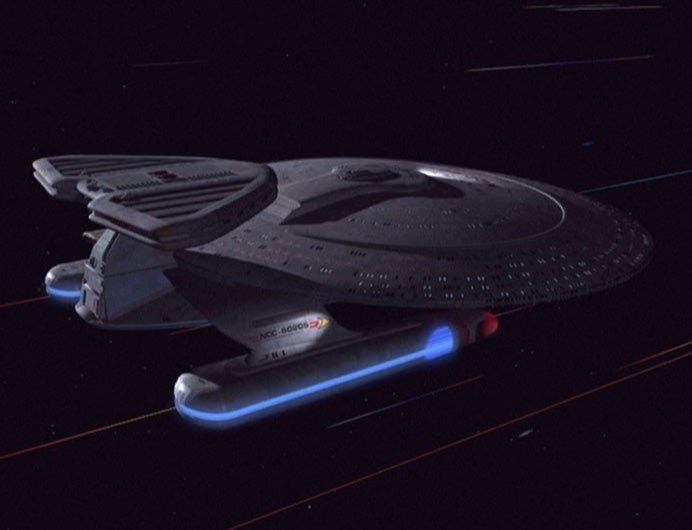
With primary hulls resembling those of its Galaxy -class counterparts, the Nebula -class explorers were featured heavily across multiple series and movies. Captain Maxwell demonstrated their tactical prowess as the U.S.S. Phoenix overwhelmed Cardassian targets in “The Wounded,” Data assumed temporary command over the U.S.S. Sutherland in “Redemption II,” the U.S.S. Farragut aided the U.S.S. Enterprise-D 's crew on Veridian III, and Professor Seyetik's U.S.S. Prometheus conducted solar experiments in “Second Sight.” The Nebula -class's diverse mission profile and extensive use over the years helped it secure such a high rank on our list.
4. Sovereign-class in Star Trek: First Contact , Star Trek: Insurrection , and Star Trek Nemesis

With its on screen credits confined to the U.S.S. Enterprise-E 's roles in the final three TNG films, the beautifully-fashioned Sovereig n-class is often considered to be an underutilized design by starship aficionados. However, given the class's appearances on background LCARS graphics in DS9, I would love to imagine that many Sovereigns were built and saw service somewhere just off-camera during those epic Dominion War battles. Geordi La Forge considered the Enterprise-E to be Starfleet's most advanced ship in 2373, and the new Federation flagship lived up to its reputation in engagements with the Borg, Son'a, and Praetor Shinzon's Scimitar . While not as voluminous as the Enterprise-D , Picard's latest command maintained a larger-than-life presence as it warped across the quadrant to extinguish diplomatic and strategic brush fires.
3. Defiant -class in Deep Space Nine , Star Trek: First Contact , and Voyager
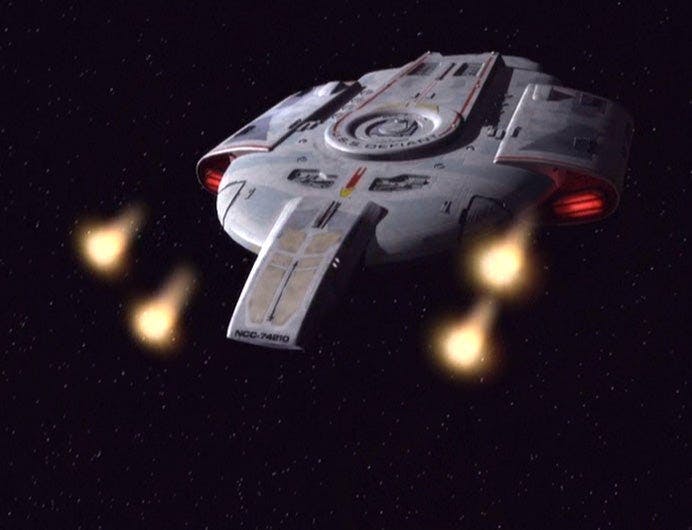
Riker's legendary quip about a “tough little ship” perfectly encapsulates the Defiant -class's ability to contain such overpowered weapons and defensive shields within such a small spaceframe. Originally developed to combat the Borg (which the U.S.S. Defiant bravely did under Worf's leadership at the Battle of Sector 001), Captain Sisko's beloved flagship ultimately earned its fiercest accolades in clashes against the Jem'Hadar both before and during the Dominion War. The only member of Starfleet to be (unofficially) considered a warship and (legally) equipped with a cloaking device, the Defiant withstood everything that was thrown at it... until a Breen energy-dampening weapon brought about its untimely end. The U.S.S. São Paulo , fittingly renamed in honor of its sister ship Defiant , allowed Sisko to oversee the Dominion's final defeat at Cardassia from a familiar bridge.
2. Intrepid -class in Voyager and Deep Space Nine
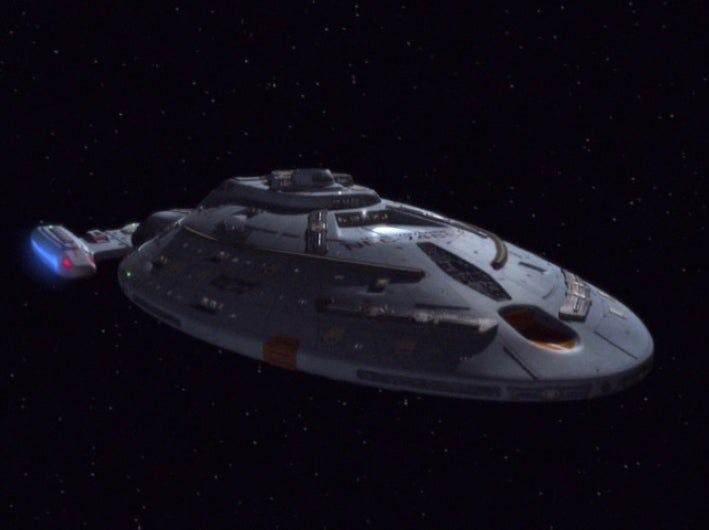
Home to Captain Janeway and her crew for their entire venture through the Delta Quadrant, U.S.S. Voyager pioneered Starfleet's use of bio-neural circuitry, the Emergency Medical Hologram, and a warp core that managed a top cruising speed of warp 9.975. Of course, Voyager also reaped the unique benefit of Seven of Nine's Borg database, a valuable library that permitted them to add a finely-tuned astrometrics lab and the Delta Flyer to the ship's already impressive complement. Voyager' s capacity to outlast everyone from the Hirogen to the Devore in a firefight while still completing countless scientific surveys and first contact missions served as a testament to its durability. When Admiral Ross visited Romulus during the height of the Dominion War, even the high-ranking officer opted to travel on the Intrepid -class U.S.S. Bellerophon rather than any other craft.
1. Galaxy -class in The Next Generation, Deep Space Nine, Voyager, Picard , and Star Trek Generations
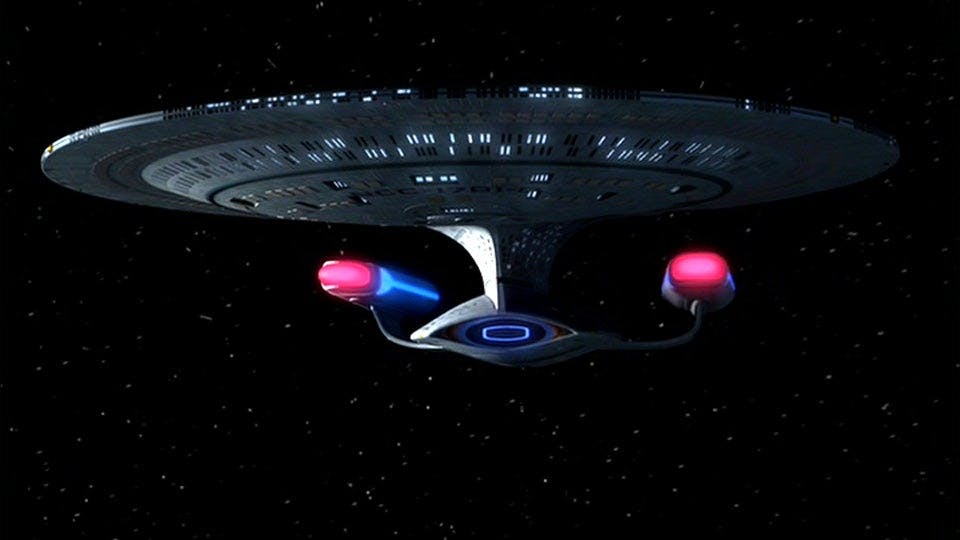
In what is sure to become a controversial decision, the Galaxy -class explorer tops our list of incredible Federation vessels. Despite early concerns over potential design flaws, the Enterprise-D and its sister ships acquitted themselves admirably from TNG's opening moments through Voyager 's return to Earth. Whether hosting dignitaries or being transported to regions beyond the Milky Way's confines, the Enterprise-D acted as a home and refuge for its crew and their families. Although the U.S.S. Odyssey fell in the Federation's first skirmish with the Jem'Hadar, other Galaxy-class starships held the line against the Dominion throughout the war. In the alternate version of 2390 depicted in “Timeless,” the U.S.S. Challenger remained in service under Captain Geordi La Forge. If the Galaxy -class is good enough for Starfleet's most accomplished 24th-century engineer, who am I to disagree?
Star Trek Ships of the Line — U.S.S. Enterprise
Jay Stobie (he/him) is a freelance writer who contributes articles to the official Star Trek website and Star Trek Magazine, as well as to Star Wars Insider and the official Star Wars website. Jay also serves as a part-time assistant and consultant advising many actors and creatives who work on his favorite sci-fi shows and films. He can be found on Twitter and Instagram at @StobiesGalaxy.
Star Trek: Picard streams on Paramount+ in the United States, n Canada on Bell Media’s CTV Sci-Fi Channel and streams on Crave, and on Amazon Prime Video in more than 200 countries and territories.
Get Updates By Email
Giant-Class Transports
Giant transports were the first high-speed, long-range, high-capacity transport ships to enter service with Starfleet and civilian services. The class heralded a new era of interstellar transportation and commerce in the Federation, establishing stronger political and economic bonds between the far-flung member worlds.
The Age of Imperialism At the dawn of the 23rd century, the human-dominated United Federation of Planets (UFP) was expanding through the Alpha and Beta Quadrants of the galaxy at an rate of nearly 1000 cubic light-years (ly) per year. Human colonization policy before the Earth-Romulan War was, for the most part, continued by the UFP in the decades after the war. This policy called for incentivized emigration from heavily populated core worlds to newly colonized M-class planets able to sustain large populations through native agriculture and resources. However, incentives were rarely needed to encourage emigration. After its victory over the Romulans, the human race was imbued with energy, confidence, and a near-messianic conviction that it was destined to spread throughout the galaxy. Thanks to the advanced technologies of the late 22nd century, life in the core human systems of the UFP had become prosperous, safe, and, according to many inhabitants, extremely boring. The recent war against the Romulans had given humans a taste for excitement and adventure that could now be satisfied only by leaving Earth and taming alien worlds.
This desire for interstellar colonization was so great that an estimated 5% of the inhabitants of the Sol and Centauri systems applied to emigrate in the 4 decades after the war. Despite the great distances involved, the number of would-be colonists overwhelmed the ability of the Federation Colonization Commission (ColCom) to find new worlds for them all. Such was the popularity of emigration that as soon as a new star system was surveyed, colonists would attempt to establish homesteads, often without sanction, even on worlds that were only marginally capable of sustaining human life or whose ownership was in dispute. The eager colonists were no longer willing to wait decades for terraforming, which might have made their new homes more hospitable. In many cases, colony ships were sent to systems that had not even been reached by survey ships, so that claims could be made on prime planetary real estate and resources.
Of course, not everyone in the UFP was comfortable with this rapid expansion. Many citizens felt that the humans, who comprised 63% of the young UFP's population, were a technologically advanced yet dangerous, undisciplined, and ethically stunted race that was determined to expand despite the inevitability of conflict with the Federation's neighbors and would recklessly drag it into war. The human race, they felt, was destined to eventually destroy itself, and the Federation with it. Other opponents of expansion feared that recurring cycles of expansion, discord, and conflict would turn the UFP into a heavily armed imperialist power completely at odds with its founding principles of peace and cooperation. Although Skon, Vulcans long-time ambassador to the Federation, had spent much of the last quarter century attempting to curtail what he saw as the growing militarization of Starfleet (See the Paris -class article for further details), by the turn of the 23rd century, he was forced to admit that the present Federation expansionist policies had broad support among the growing population of the Homeworld Core of the Federation and that the juggernaut of colonization was unlikely to be stopped.
Strings of Pearls The slow, short-range fusion-powered transport ships available before the Earth-Romulan War and the first decade afterward required a pattern of colonization in which the most recently settled star system served as a jumping off point for colonizing the next most distant star system, usually within 3 parsecs (9.75 ly). Once settled and home, after a decade or more, to a growing indigenous population and a well-developed industrial and agricultural base, the young world would be able to generate or support the colonization effort to the next star system. In such a way, colonies would slowly spread out from the core worlds of the UFP like long strings of widely spaced pearls. (See star chart, Federation Core Systems, 2170 )
As new worlds were colonized and colony strands lengthened, the distances from Earth, and from other colony strands, became greater. For example, the mining planet Ogun (NN 3412) was the eighth colony in a strand starting at the core system of Zhoudingyi (Beta Comae Berenices). Because commercial starship lines operated only short routes between nearby star systems, to travel to Earth a resident of Ogun would have to make a trip of nearly 30 parsecs in 9 or more legs, although Ogun is only 10 parsecs from Earth. Even with the introduction of civilian matter/antimatter (M/AM) reactors, to complete such a 30-parsec trip to Earth the fastest postwar Bison transport at its maximum cruising speed of wf 3.3 would take at least 3 years, not counting the waiting time at each star system. Similarly, emigrants from core worlds would need to travel for 3 years just to reach the outermost bridgehead for new colonies. This long transit time and the time needed for a bridgehead colony to develop to a point where it could independently launch a colonization effort were much greater than the human population of the core worlds was willing to tolerate. Clearly, this paradigm of colonization could not support emigration at the volumes and speeds humanity desired.
The great distances between the UFP core and outlying colony worlds also limited the transport of people, foodstuffs, raw materials, and manufactured goods. Although the "string of pearls" colonization pattern facilitated the economic development of mutually supporting chains or clusters of colony worlds in nearby star systems, the distances of colony strands from Earth and from other colony strands tended to increase quickly. As a result, each strand became more isolated from Earth and from other strands. There were fears that these great distances would eventually weaken the political and cultural links between these outlying colony worlds and the Federation core, damaging the cohesion of the Federation and leading to its eventual breakup.
Nonhuman species that had recently joined the UFP were also affected by their great distances from the Federation core. The UFP had touted membership as being mutually beneficial: the new member would gain protection, brotherhood with dozens of species, and access to markets and advanced technology, while the Federation would benefit from Starfleet basing rights, free passage across the member's space, and the addition of a distinctive new culture to the diversity of the Federation. However, because of the great distances to the UFP core, many new members felt they had benefited little from UFP membership. With the infrequent visits by minor Starfleet vessels and low-level commissioners, the founding powers of the UFP, especially the humans, often seemed more like absentee landlords than galactic peers. Many new members felt that they had surrendered a measure of their sovereignty to become yet another steppingstone in the march of humanity across space.
As UFP colonization efforts penetrated deeper into previously unexplored space, the risks of resistance from other powers or attack from hostile species became more acute. Exacerbating these risks was the human habit of colonizing star systems whose ownership was disputed. Protecting these colonies and other UFP areas required constant vigilance and the armed might of Starfleet. However, Starfleet did not have enough ships and starbases to guard against all possible threats in all possible locations. Starfleet was doing its best, but lacked the ability to rapidly establish starbases in frontier areas or to rapidly redeploy its limited number of cruisers among all areas in need of protection.
A New Transport System for the Federation By the end of the 22nd century, it was becoming clear to UFP planners that its system of interstellar transportation, in which stars were linked to one another in a haphazard manner with journeys of the shortest possible length, was too slow and disorganized to support the desired levels of colonization, commerce, defense, and diplomacy. To replace this system, the Federation sought to develop a new system in which the major stellar systems of the Federation core and of outlying areas would be linked by long, direct routes and serve as bases for shorter journeys to surrounding stars. Such a "hub and spoke" system would tie the Federation together in numerous ways. However, to establish and operate such a Federation-spanning transportation system, Starfleet and commercial lines lacked both the necessary infrastructure and the transport ships possessing the combination of high speed, long range, and large capacity.
A capability long coveted by Starfleet and ColCom was what was known as "Starbase in a Box" or "Colony in a Can." This capability would allow the equipment and personnel needed to construct and operate a starbase or to establish and populate a colony to be quickly transported in a single journey. Lacking this capability, Starfleet and ColCom were forced to make multiple trips with small, fast ships or single trips with large, slow ships. Starfleet's previous class of large transports, the Ocean class of 2168, which had been built to replace the large, slow prewar Bison -class transports, could certainly carry large payloads, but Starfleet's Transport Command had specified, with an astounding lack of foresight, a cruising speed of only wf 3.2 (33 c ), believing that higher speeds would wrongly signal an aggressive or expansionist intent. However, by 2175, civilian transport ships regularly reached speeds of 75 c or more (wf 4.2). Accordingly, within a decade of entering service, the Ocean s were considered unbearably slow. By the start of the 23rd century, Starfleet had lost any fear of "sending the wrong message" and actively sought a large, fast, long-range transport ship that could support the Federation's expansionist policies.
In an attempt to compensate for the slow Ocean class, in the 2180s Starfleet had obtained the 50-ship Constellation class , a military version of the fast civilian Sozvezdie transport, which had introduced high-speed, long-range M/AM-powered civilian transport to the UFP. Although Sozvezdie had a cruising speed of wf 4.4 (85 c ), this speed had come at the expense of payload. Sozvezdie transports had been designed to be smaller than slower ships of its time, to ensure high occupancy and payload rates and, therefore, to maximize profitability for civilian operators. By the end of the 22nd century, however, demand was growing for cargo and passenger ships that combined the high speed of Sozvezdie with the large payloads of the Bison and Ocean classes. Attempts to lengthen Sozvezdie and increase payloads had been disappointing, as its narrow beam did not provide sufficient longitudinal rigidity without the introduction of heavy strength members that further decreased cross-sectional areas and payloads. Several Sozvezdies were fitted with "speed pallets" on the top, bottom, or sides of the hull to carry additional cargo but not, for safety reasons, additional passengers. These measures yielded only modest increases in payload and were, at best, temporary.
In April 2204, the Federation Transportation Commission (TransCom) announced the Century 23 Spacelanes Initiative (SI-23) to establish a UFP-spanning hub-and-spoke transport network with the goal of promoting and facilitating colonization, commerce, defense, and "galactic amity." More than 3 decades earlier, in 2170, the UFP had announced the first Spacelanes Initiative with many of the same goals, but ships capable of supporting such an ambitious transport network were not available. This time, however, TransCom had the technology, the financial resources, and the support of Starfleet, ColCom, and the Federation Commerce Commission (ComCom) to establish a true Federation-spanning transport network. SI-23 called for the selection and development of regional transport hubs where the Federation would subsidize the construction or upgrade of Starfleet starbases; freight handling and passenger terminals; orbit-to-surface matter transporters; facilities for traffic control, the production, storage, and refueling of M/AM, and the repair and maintenance of starships; long-range subspace transmitters; and offices and accommodations for Federation bureaucrats. The chosen systems would become the de facto "capitals" of their sectors of space and could be predicted to undergo explosive growth once the project had been completed.
The various UFP commissions involved in choosing star systems as regional transportation hubs were expected to weigh numerous factors. These factors were likely to include population, cultural development, scientific and educational institutions, agriculture, raw materials, numbers of class-M planets, facilities for cargo and passengers, intrasystem and intersystem starship traffic, starship lines serving the system, and proximity to surrounding star systems. Political considerations were also likely to be important, as a stated goal of SI-23 was to strengthen the bonds between newer Federation members (and even potential members) to the more established members of the Federation. However, which factors were considered most important by Starfleet, ComCom, ColCom, and TransCom was a closely held secret, which meant that much effort was expended by candidates systems to determine the exact calculus by which the final decisions were to be made so that they could be predicted and, possibly, influenced.
SI-23 promised to be the costliest infrastructure project since the founding of the Federation and, for selected star systems and construction companies, the most lucrative. Such was the expected economic windfalls that none of the candidate star systems, human or nonhuman, dared leave the selection process to luck or mere merit. Every interested party sent an army of bureaucrats, politicians, and lobbyists to Earth by the fastest ships at their disposal so that they could exert as much influence and pressure as possible for as long as possible on the decision-makers before the winners were to be announced in 2 years time. Together with the Lancaster heavy cruiser project of 2201, SI-23 was marked by levels of corruption and malfeasance unprecedented and unsurpassed in Federation history. However, regardless of the numerous instances of misconduct surrounding the selection of transport hubs, the star systems finally chosen as hubs were, with a few notable exceptions, the most deserving candidates.
Starfleet's Giant Class In May 2204, Starfleet's Ship Specifications Review Board announced the developmental pathway for a new 100-ship class of large transports for Starfleet, to be called the Giant class. The target specifications for the Starfleet's Giant class called for a ship able to carry 400 passengers and a payload of 7800 standard cargo containers or 100,000 cubic meters a distance of 37 ly at a cruising speed of at least wf 4.5. The basic hull and drive elements were to be designed at Starfleet's Utopia Planitia Yards at Mars. The spaceframes were then to be constructed and assembled there and at other Starfleet yards throughout the UFP. Of the spaceframes assembled during the first 5 years (from 2206 through 2210), 100 were reserved for Starfleet's Giant class, and a further 20 for ColCom's Colonial Transportation Service. However, other spaceframes produced during that time and thereafter could be purchased at cost by civilian ship builders, who would outfit them as passenger liners and cargo ships and sell them to civilian transportation companies. By having Starfleet transports and civilian liners and cargo ships all based on the same propulsion system and hull, the Starship Specifications Review Board and the various Federation commissions hoped that the costs of design, production, operation, and maintenance would be decreased for Starfleet and for the entire Federation civilian transport system.
To encourage ship builders to develop and construct civilian versions of Giant and then to encourage commercial freight and passenger lines to purchase these ships and put them in service, TransCom would provide, through the Federation Central Bank, long-term, low-interest loans. Such loans were considered necessary because servicing the initial purchase of a starship, especially extremely expensive passenger liners, normally comprises the largest part of the yearly operating costs of a starship and is the greatest obstacle to profitability of a commercial passenger or cargo fleet.
When the Giant project was announced several manufacturers of large transports and passenger liners complained that Starfleet was willfully destroying the UFP's ship-building industry by supplying low-cost hulls and drive systems to the civilian market. However, TransCom countered that the ultrahigh-speed, ultralong-range, ultrahigh-capacity segment of the market had so far been completely ignored by current ship builders and designers. TransCom maintained that they were creating an entirely new sector of transportation that would funnel high volumes of passengers and cargo into designated hub star systems and would spur the construction and purchase of ships to shuttle cargo and passengers between the hubs and neighboring stars.
The first unit of Starfleet's Giant class (USS Aegir , NCC-T184) joined Transport Command in 2207 (and was followed by the rest of the 100-ship class over the following 4 years). Although the wait had been long, Starfleet finally received the large, fast long-range transport it had wanted since the 2170s. By displacement, Giants (418,000 t) were not as large as the largest prewar Bisons (495,000 t) but had a much larger usable payload because it no longer needed to carry large volumes of deuterium for a fusion reactor to power the warp drive. However, Giants displacement was 33% greater than that of Ocean (315,000 t) and 132% greater than that of Constellation (180,000 t). The warp drive of Giant was powered by a military-grade SSWR-III-J M/AM reactor near the keel just forward of the fantail. The plasma conduits were routed forward through the hull to emerge behind the large main cargo bay and attach through supports to the rear half of the immense forward-positioned Jumbo nacelles. The warp drive system could attain a cruising speed of wf 4.6 (97 c ) for 38.5 ly and a maximum speed of wf 5.3 (149 c ). Forty-eight standard AM bottles for onboard use were housed in a bunker directly below the M/AM reactor, and an additional 277 AM bottles for auxiliary use and for transport to shore facilities and other ships were housed in a containment canister protruding from the keel of the ship. Sublight propulsion was provided by a pair of twin fusion reactors and impulse thrust assemblies housed in streamlined cowlings on the rear quarter of the hull. Atop the cowlings were large cooling fins for dissipating heat from the fusion and warp reactors; these fins were also a convenient spot for displaying shipping line house flags and other identifying markings.

The cargo storage and handling facilities of Giant were the largest on a starship to date. The 72,600-m 3 bulk cargo bay and the 28,200-m 3 bin cargo bay were located in the lower forward part of the ship, and a container cargo bay for 7,989 standard containers stretch from behind the bulk bay to the mid-part of the ship. Giant's 5 shuttlebays (forward, middle upper and lower, and rear upper and lower bays) were used for loading and off-loading cargo from shuttlecraft and could also be used to carry miscellaneous cargo or several dozen ship-borne fighters, such as Penguins and Puffins , and other small craft. The cargo spaces and shuttlebays were connected by means of a network of corridors and turbolift shafts, although very large cargo items could not be moved between all cargo spaces. Giant's 4 largest cargo transporters could each transport 90-m 3 jumbo cargo containers from the container cargo hold to bulk cargo holds or to shuttlebays. The transporters could also be used to transfer cargo to planetary surfaces or to other ships and space stations. However, man-rated transporters were not installed in Giant s until after 2215.
From 2206 through 2210, 120 Giants and Giant -based vessels were constructed for Starfleet and ColCom. The new Giant s of Starfleet's Transport Command were quickly enlisted to support the expansion of the Federation's frontiers. With its large cargo and passenger capacities, a single Giant could deliver all the equipment and personnel needed to construct a terrestrial or orbital starbase and operate it for 5 years without resupply. The equipment included prefabricated structures of various types, construction vehicles, M/AM and fusion generators, subspace radio receivers and transmitters, shield generators, matter compilers, protein mills, water purifiers, livestock, agricultural supplies, logic systems, defensive beam and missile batteries, personal weaponry and armor, ground vehicles, shuttlecraft, satellites, transporters, starship maintenance equipment, liquid and gaseous chemicals, medical supplies, and much more. Also delivered were the 400 crew and family members to construct and man the starbase. This capability of rapidly constructing starbases allowed Starfleet and the Federation to quickly establish control over vast areas of space. By 2220, the annual rate of Federation expansion had increased to 1750 cubic ly. (See star chart, Federation Core Systems, 2215 )
Once those bases had been established, Giant s were used to bring Federation officials and Starfleet crewmen, stores, and supplies from Earth and other core worlds on direct, ultralong-distance routes, rather than being slowly brought up through old colonial strings of pearls. The Giant s cargo and passengers would then be offloaded in-system or be transloaded to one of Starfleet's slower or less capacious ships, such as Ocean s, Constellation s, or various courier vessels, and then be distributed to neighboring star systems. The Giant would then return coreward or proceed on another ultralong-distance journey to its next scheduled stop.
However, the rapid expansion of the Federation territory in the decades after the Earth-Romulan War had come at a price. Because the ownership of colony worlds was often disputed by other powers, Federation territorial claims often had to be vigorously defended by Starfleet. As a result, Federation expansion since the start of the 23rd century had been accompanied by an aggressive Starfleet posture and a rapid build-up of forces, as represented by the powerful new Lancaster and Paris classes. Even with these changes, the Federation's defenses were beginning to become overstretched and would eventually require a re-evaluation of Starfleet policies.
Starship Tenders In addition to serving Starfleet as passenger transports and cargo ships, Giant -derived vessels served as starship tenders or, perhaps more accurately, task-force support ships. These ships were an important part of Starfleet's ability to project power far from the Federation core and to undertake both defensive and offensive operations without the direct support of starbases. Tenders had large crews, numerous maintenance craft (work bees), and extensive facilities for repairing starships large and small, their embarked craft, and their various onboard components. They had the internal capacity to carry all that was needed to rearm, refuel, resupply, and replenish starships so that they could continue operations without having to retire to starbases that might have been many parsecs to the rear. Giant s could also be outfitted with medical facilities and staff able to care for 100 inpatient casualties per week. The passenger cabins could be used as temporary berths for starship crews as their ships were being repaired. Giant s were fast enough to keep pace with task forces and, because they carried no defensive weaponry, to retreat to safety when threatened.
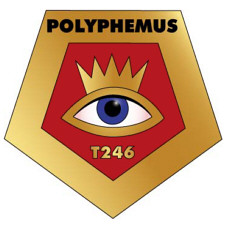
A representative tender mission was the support given by USS Hymir (NCC-T223) to a 6-ship task force led by the Lancaster -class heavy cruiser USS Arronax (NCC-1250) and including 2 Paris -class light cruisers, USS Teheran (NCC-908) and USS São Paulo (NCC-901), and 2 upgraded Hyperion -class survey cruisers, USS Rhea (NCC-858) and USS Tethys (NCC-861). In May 2212 the task force was sent to a system designated Kappa 221 (BD+07˚3967), some 10 pc beyond the Federation border from Ennigaldi (Gliese 726), then one of the Federation's most distant colony systems, to investigate the loss of the long-range explorers SS Magellan and SS Infinity 3 years earlier. Subspace signals and radio messages analyzed by Starfleet suggested that both ships had been pursued, attacked, and destroyed by vessels of a previously unknown race. The Kappa 221 system and several nearby systems had been identified as promising targets for colonization and mineral exploitation.
After a voyage of nearly 3 months, the task force arrived at Kappa 221 in August 2212. A survey of the planets revealed several with fluorine atmospheres, apparently engineered, that showed signs of earlier settlements but were now abandoned. However, no traces of Magellan or Infinity were found. Three weeks later, the task force was confronted by 4 ships of a previously unknown configuration. Arronax transmitted messages of greeting and friendship, which were met with no response. The aliens suddenly charged the task force firing disruptor-like weapons. In the resulting action, all 4 alien ships were destroyed, and Teheran sustained 12 casualties and moderate damage.
Long-range scans of warp signatures by Rhea and Tethys showed that the alien ships had likely originated from the system designated Kappa 223 (BD+07˚3992), some 1.8 parsecs (5.85 ly) away. As Arronax consulted with Starfleet Command, repair crews from Hymir attended to the damaged Teheran . Teheran 's port warp nacelle was replaced with a spare carried by Hymir , and her injured crew members were transferred to Hymir 's well-equipped sickbay. The missile batteries of the all ships were restocked, and their deuterium stores were topped off from Hymir 's internal tanks. The task force was ordered to proceed to Kappa 223.

En route to Kappa 223, the task force was attacked by alien ships 3 times without warning. After each action, the task force dropped out of warp for repair and replenishment by Hymir . After a journey of 5 weeks, the task force dropped out of warp near Kappa 223 and was confronted by a fleet of 15 heavily armed ships of various sizes. Sensor scans showed that the star system included 3 terrestrial planets with fluorine atmospheres, all heavily populated. The task force commander, Commodore Alberta Keller of Arronax , realized that the aliens saw the task force's presence in their system as an existential threat and were prepared to do whatever was necessary to repel this "invasion." With this realization, Starfleet ordered the task force to withdraw from the Kappa 223 system. The following day an unarmed shuttlecraft carrying Commodore Keller, her first officer, and Federation Special Ambassador Somak approached the most heavily populated planet to open negotiations. Their overture was accepted, and in 2228 the Zaranites, who were the inhabitants of Kappa 223 and several nearby systems, became members of the Federation. Thanks to the support of Hymir , the task force was able to sustain combat and diplomatic operations far from the Federation core for nearly 9 months.
Civilian Giants In the first 10 years of Giant hull production (2206 through 2215), some 80 civilian passenger liners and transports were constructed and outfitted. At first, hulls were produced only by Starfleet yards and then guided by tugs to be outfitted at civilian facilities. However, because of the inability of the numerous Starfleet yards to meet the demands of both military and civilian users for the popular Giant -based hulls, they were later constructed under license by several civilian shipbuilders.
A famous class of civilian ships based on the Giant hull were the Imperator starliners designed and outfitted for the Cunard Line by Chantiers de la Terre (CDT) at its Saint- Nazaire orbital facilities at Earth. Imperators were intended to be most luxurious, most prestigious ships serving the highest end of the interhub civilian passenger market, befitting the Cunard Line, a company that could trace its roots back 350 years to a steamship operator on the oceans of old Earth. The Cunard Line, however, had not operated continuously for those many centuries; like many companies on Earth, it had gone into eclipse during the dark age following the Third World War. In 2149, the rights to the Cunard name were purchased by the Geumseong chaebol (family-based conglomerate), based in the Astraea system (HN Librae), for a passenger and freight line serving the Libra colonies (the others being Themiste [HO Librae], Mohannak [Gl 570B], and Maat [Wolf 1061]). These worlds, which had been established as agricultural/mining colonies in the early 2120s, had enjoyed explosive growth during and after the Earth-Romulan War and now rivaled Sol and Alpha Centauri as centers for manufacturing, culture, and education. In the post-War boom years, the Cunard Line had expanded to offer service to other systems in the upper Federation core, including Mohannak (Gl 570B), Italpas (Gl 588), Novaya Rossiya (Gleise 526), Zhoudingyi (Beta Coma Berenices), and several Andorian worlds. Now, in the early 23rd century, the Cunard Line sought to transform itself from a regional carrier to a Federation-wide passenger and freight fleet. However, to reach the central and lower regions of the Federation core from its base in the Libra colonies, Cunard ships had to travel at achingly slow speeds or to stop for refueling at the crowded transport hub in the Gateway system (Ross 128), which was dominated by the Red Griffon (Hóng Shī Jiù) clan, the long-time bitter rival of Geumseong. The 5.4-parsec direct journey from Nova Rossiya to Earth while bypassing Gateway would require faster, longer-range ships than the Kuribayashi Commander -class transports that Cunard had been using.
After considering several shipbuilders, Cunard entered into negotiations with the Bel Geddes Astral Corporation to commission a longer-range "stretch" version of its already severely thin Streamliner -class freightliner. These 300-m-long, 30-m-wide greyhounds attracted a high-end clientele for high-speed, short-distance, high-profit routes, such as the Earth-Centauri run. Indeed, in 2202, SS Lakme captured the Blue Riband for Ajira Spaceways with a time shattering the previous record by nearly a full day. However, Streamliner -class ships were expensive to operate and required high fares and high occupancy rates to turn even modest profits. With a longer, wider-beam version of Streamliner Cunard sought a ship able to maintain similar high cruising speeds yet have a longer range. Cunard was confident that the "stretch" Streamliner would pioneer new long-range routes and would be more profitable, should passenger demand for such routes increase as projected. The new Streamliners would certainly have been impressive ships. However, just as the contracts were about to be signed in late 2203, Cunard began hearing rumors from its contacts in TransCom of the soon-to-be-announced Giant project and put its plans on hold.
After Giant and SI-23 were announced, Cunard invited submissions from starship builders to create a Giant -based passenger liner meeting its needs. CDT, which had built and converted luxury liners for major shipping lines since the late 21st century, were well-suited to accomplish a project of this size and scope. Cunard agreed and contracted for the delivery of 4 passenger liners of what was to be called the Imperator class. The first ship was scheduled to be launched in 2208, with the others following at 9-month intervals.
Queen Anne , the first of the new liners and the new flagship of the Cunard line, set off on her maiden voyage after a lavish ceremony, attended by Federation officials, diplomats, industry titans, and other dignitaries, at the CDT orbital yards on February 12, 2209. The passengers boarded the ship through a 3-story-tall airlock lobby, which opened onto an 8-story-tall, 65-m-long atrium/promenade called the Uncanny Valley in the upper third of the ship. Lined by shops, cafes, clubs, a casino, and other leisure and entertainment facilities on setback levels, the Valley was roofed by a single piece of transparent aluminum, which made it appear to be open to space. After the passengers had found their staterooms in the lower forward third of the ship, they toured the activity areas in the upper middle third of the ship. There they could find a gymnasium, ball courts, swimming pools, simulators, zero-gee spheres, cinemas, theatres, baths, spas, and various places for eating and drinking. Finally, at the rear third of the ship, they reached their tables in the 3-story-tall main dining hall, where the maiden voyage was celebrated with a lavish banquet. After dinner, they could tour the 4-story-tall arboretum and enjoy cocktails and dancing. The walls and roof of these areas were mostly transparent aluminum.
In addition to the 4 Imperator -class ships built for Cunard and the 4 built for other lines, 17 similar ships were constructed and outfitted for the extreme high end of the passenger market by CDT and other builders. However, from 2206 to 2225, several hundred more Giant-based ships were constructed and outfitted for more modestly priced segments of the passenger market and for hauling freight. Fortunately, the warp-drive and impulse-drive systems and basic architecture of Giant were extremely robust and allowed extreme levels of modification for a wide array of roles.
Effects of SI-23 Within several years, the introduction of high-volume, long-distance Giant -based passenger liners and cargo ships began to have its desired effects. By 2215, both passenger and cargo volume from the Federation core worlds to outlying areas had increased by more than 150% via service on the new direct, longer routes. The concentration of traffic meant that the smaller number of routes were easier to monitor for ships in distress and to protect from piracy. As regional hubs thrived through increased trade with the core systems, the prosperity spread to surrounding systems via large numbers of medium-range and short-range transport ships, many newly constructed. Rate conventions agreed to by passenger lines and relevant Federation commissions set minimum fees for passage to ensure that safety was not compromised in an attempt to undercut competitors on cost. However, fees for passage on these large, fast ships were substantially lower than those on earlier, smaller ships. Ultralong-distance "cycler" ships made frequent, regularly scheduled journeys on the triangular route connecting Vulcan, Andor, and Tellar and then inward toward Earth and strengthened the cultural, political, and economic ties between Federation capitals. Furthermore, thanks to Giant -based liners, descendants of colonists who had left Earth many generations ago were welcomed back to the homeworlds of their ancestors.
However, the new transport system did not benefit all. Many once-prosperous star systems were bypassed by the new system and withered. One of the biggest losers was Gateway (Ross 128), which had been a required refueling and replenishment stop for ships traveling northward from the Earth-Centauri core in the first century of interstellar commerce and colonization. However, being resource-poor and home to barely habitable terrestrial planets, the Gateway system had failed to develop any institutions or facilities not directly related to the support of starships, cargo, and crew. At its peak in the 2170s, Gateway's orbital facilities serviced hundreds of ships a year traveling from Earth and Centauri to Novaya Rossiya, the Libra Colonies, and beyond. The major player in the Gateway system was the Red Griffon cargo and passenger line, which had an extensive financial stake in Gateways cargo and passenger terminals. However, when long-range transports were able to bypass Gateway and travel directly to Novaya Rossiya, a system that included 3 prosperous, self-sustaining M-class worlds, the Red Griffon clan and the prospects of the Gateway system collapsed.
As the Federation established control over previously colonized but largely unsupervised areas, the Federation bureaucracy became more intimately involved into the lives of its citizens. In some areas this greater involvement was seen as an unwarranted intrusion. For example, the Federation began to strictly enforce tariffs and taxes for all commercial activities and to require documentation for all imports and exports. Dissenting colony worlds felt they had prospered in the absence of Federation oversight and had benefitted little from Federation-administered services or defense. However, the Federation also sought to fulfill its mandate of preserving the dignity and lives of all sentient beings. On some colony worlds arriving workers had been surprised to learn they were already deeply in debt for the costs of their passage and were then forced to labor under conditions of virtual slavery with little hope of freedom or relief. If alerted to such a situation, Federation law-enforcement officials took the exploiting parties into custody and ensured that the workers were released from their bondage and, if they desired, were relocated to other colonies. On other worlds, traditional entertainments the Federation now considered barbaric, such as fights to the death among sentient, semisentient, and nonsentient species, were eradicated. Federation commissioners and their agents did their best to eliminate trade in illegally obtained archeological relics, importation of dangerous pharmaceuticals, adulteration of foodstuffs, unlicensed mining, improper disposal of toxic materials, unsafe working conditions, and environmental alteration endangering sentient species. As even distant colony worlds became more tightly bound to the Federation core through law, culture, and commerce, many commentators mourned the "closing of the final frontier." Of course, the frontier was unlikely be remain closed for long.
Conclusion The introduction of the Giant -class transports to Starfleet and related classes to civilian service, achieved, for the most part, the goals of Federation planners. Starfleet finally obtained a class of large, fast transport ships that allowed it to rapidly found colonies and construct starbases and to more easily project force far from the Federation core. Giant -derived civilian starliners and cargo ships allowed the establishment of a safe and secure hub-and-spoke transportation network that bound the diverse societies of the Federation closer together, fostered interstellar trade and cultural exchange, and allowed Starfleet to more easily reposition its starships and crews. However, the rapid expansion of Federation territory enabled by these developments would lead to crises and conflicts later in the 23rd century.
More than a century and a half after being launched, at least 50 Giant -derived ships remain in civilian service throughout the Federation. Their robust spaceframes and adaptability have allowed continuous upgrades of power plants and nacelles. Although some ships have continued in their designed role as interstellar passenger liners, others have been converted to cargo ships, intrasystem cruise ships, and space stations. Giant s served Starfleet's Transport Command for well over half a century, with the last ship, USS Weiland (NCC-T275) being retired only in 2272.
USS Fezzik (NCC-T210), a 51-year veteran of the Starfleet Transport Command and the Colonial Transport Service, has been returned to its original appearance and is on display at the Starfleet Museum.
Standard displacement: 418,025 t
Crew complement: 140 (12 officers + 128 crew) Passenger capacity: 420 military passengers in 142 cabins Cargo capacity: 7,989 containers, 72,600 m 3 cargo bay> Embarked craft: 1 heavy cargo shuttlecraft, 3 medium cargo/personnel shuttlecraft, 10 personnel shuttlepods Warp drive: SSWR-VIII-C spherical cavity M/AM reactor with 2 Jumbo nacelles Velocity: wf 4.6, cruise; wf 5.1, supercruise; wf 5.3, maximum Range: 38.5 ly
Standard displacement: 425,319 t
Crew complement: 400 (17 officers + 383 crew) Passenger capacity: 1,200 passengers in 775 cabins Cargo capacity: 979 containers Embarked craft: 2 medium cargo/personnel shuttlecraft, 4 light cargo/personnel shuttlecraft, 16 personnel shuttlepods Warp drive: SSWR-VIII-C spherical cavity M/AM reactor with 2 Jumbo nacelles Velocity: wf 4.6, cruise; wf 5.1, supercruise; wf 5.3, maximum Range: 37.8 ly Range: 38.5 ly
*Imperator passenger configuration
Not logged in
- Create account

Category : Civilian Ships
Page actions.
- View source
Alphabetical list of civilian vessels encountered throughout gameplay:
Subcategories
This category has only the following subcategory.
- Romulan Civilian Ships
Pages in category "Civilian Ships"
The following 7 pages are in this category, out of 7 total.
- S.S. Rihana
- S.S. Sallai
- Sh'mar
- About the game
- Wiki guidelines
- Wiki policies
- Random article
- Recent changes
Communications
- Community portal
- Community talk
- Suggestion Box
- Noticeboard
Quick links
- Community resources
- Playable starships
- Upcoming content
- Reputations
- Specializations
- Special pages
- Page values
User page tools
- What links here
- Related changes
- Printable version
- Permanent link
- Page information
- Last modified: 11 August 2010 at 11:13.
- Privacy policy
- About Star Trek Online Wiki
- Disclaimers
Civilian department
- VisualEditor
- View history
Overview [ | ]

The Civilian duty officer department consists of personnel who serve aboard starships, but are not officers or enlisted personnel of Starfleet , Klingon Defense Force , Romulan Republic or Dominion .
Specializations [ | ]
- 1 Delta Recruitment
- 3 Playable starship

Starfleet Ship Classes A-K
Starfleet A-K Starfleet L-Z Uncertain Starfleet Class Unknown Starfleet Class
Known prefixes NCC: Starfleet, active service NX: Starfleet, experimental

https://www.ex-astris-scientia.org/schematics/starfleet_ships1.htm
Last modified: 24 Mar 2024

© Ex Astris Scientia 1998-2024, Legal Terms
This website is not endorsed, sponsored or affiliated with CBS Studios Inc. or the Star Trek franchise.
Fleet Yards
Star Trek: Exploring The Enterprise D’s Civilian Problem
What exactly did the civilians in The Next Generation do all day, and how ridiculously oversized was their home?
Star Trek is a franchise filled to the point of overflowing with futuristic technology ( some of which is on the brink of being achieved today ), a range of complex socio-political cultures, and a massive cohort of alien races spanning the galaxy. Some of the most pivotal and arguably most important aspects of any Star Trek series, is not the characters, it’s not whatever mystery is facing the crew , but the vessel itself.
Over the years there have been various different iterations of the iconic USS Enterprise , from The Original Series all the way to Enterprise. However, one of the most divisive was the Enterprise from the much -oved The Next Generation TV show, under the command of Captain Jean-Luc Picard. Though beloved, the ship had one major complication — the vast amounts of civilians on board.
RELATED: Star Trek: Why TNG Improved So Much After Season 1
While this may not seem like an issue to begin with, it’s actually part of a much larger complication when one considers what this ship was actually intended for. The USS Enterprise (NCC-1701-D) was a galaxy class ship, and despite being the panicle of Federation technological advancement, the Enterprise D was used primarily as an intergalactic cruise ship. This is perhaps downplaying its purpose somewhat, but as it was built in a time of relative peace. The long war with the Klingon Empire had ended. The Vulcans' long-lost cousins the Romulans were not particularly friendly per se, but they kept to themselves. The Cardassians were being kept at arm's length by the crafty politicians of the Federation. Things were good for the alpha quadrant, so the need for large scale military ships was much lower. Instead, a focus on exploration and discovery took center stage.
It was apt, then, for a program that teaches the importance of self discovery and improvement, to have a scientific discovery vessel as their flagship, rather than devoting it to being a military-focused weapon of mass destruction — not quite the message the Federation or Gene Roddenberry were trying to portray . While the Enterprise D was not specifically a war ship, it was still capable of packing a punch. It was faster and stronger than any ship that came before it, and despite not openly advertising it, it also had the most firepower. It would easily have been classified as a battleship or battle cruiser. However, Starfleet were adamant to class it as an exploration cruiser, not made for war but to explore.
This non-militaristic function was why the ship had so many civilians on board, a combination of crew member families and "employees," for want of a better word . While a fair amount of military institutions today will often have a few civilians rattling around, whether in ports running stalls or providing various forms of entertainment, it is nothing on the scale present aboard the Enterprise.
This is most likely exactly what this large number of civilian crew members would do: running the necessary "civilian" style functions such as barbers, bartenders, teachers, waiters, the list goes on. They are shown various times throughout the show, the mysterious Guinan being a prime example running the Ten Forward bar. This is addressed in DS9 with the famous Miles O'Brien 's wife Keiko, who is shown searching for a purpose aboard the station, trying out teaching and eventually settling on Bajoran botany. The Enterprise is as much a place for space exploration as it is self exploration, and discovery of what people really want to do with their lives.
These people would be a mixture of individuals wanting the space faring lifestyle, living in relative luxury while performing their roles, and the family members of Starfleet officers. It was supposed to be a five-year mission of exploration, and due to the relative peace the Federation were experiencing, they decided it would be fine for these family members to tag along. The problem, then, comes with the ridiculous amount of danger the USS Enterprise D is repeatedly put in.
It would make sense, after a season or two of various disasters occurring, like getting teleported across the galaxy to fend off against a race of robot zombies , that Starfleet might have thought twice about sending many innocent civilians into unexplored and dangerous areas of space. However, things continued in much the same way. These civilians were most likely given roles and direction in times of crisis, the red alert sirens ushering them to safe zones as well as them all being trained in some form of emergency relief: firefighting, first aid, etc.
The second issue becomes apparent when looking and the enormous scale of the ship. It has been estimated that the ship contains 8.9 million square feet (or 827,000 square meters) of habitable space. While this sounds like a lot, it’s hard to imagine this enormous scale without any context, so it’s important to factor in how many people were aboard. According to the ship's itinerary, there were around about 1,000 crew members, which included civilians. This would mean that if the population were spread out across the ship, then they would each have 8,869 square feet (824 square meters) of space just for themselves, showing how ridiculously large the ship is.
Putting this into perspective, the current largest cruise ship on earth is the Wonder of the Seas, holding around 6,000 people in a space a fraction of the size of Picard’s Enterprise (1,180 ft long, 154 feet acorns, and 240 ft tall, as opposed to 2,108 ft long, 1521 ft across, and 640 ft tall). Of course, there are a lot of centralized locations on the ship where crew congregate, but rather than the bustling metropolis the writers were intending, the ship would have realistically felt more like a ghost town.
Having civilians aboard the gigantic Enterprise D is a strange mix of bad ideas, constantly putting them at risk when exploring new and dangerous parts of the galaxy, and a necessity to try desperately to fill the ship up, populate the hallowed halls, and try and make the Enterprise feel alive. The writers created a problem however when they didn't truly take into account the absolute behemoth they designed, wrongfully assuming 1,000 - 6,000 crew members would easily fill the ship up.
MORE: Star Trek: The Worst Episodes Of The Franchise

Captain Kirk should have gone aboard Star Trek: The Next Generation's Enterprise
W illiam Shatner's Captain Kirk made his final appearance on Star Trek: Generations. He, Montgomery Scott (James Doohan) and Pavel Chekov (Walter Koenig) joined the Enterprise-B for its inaugural adventure, and Kirk saves the ship from a gravimetric field and is presumed dead. From that point forward, Kirk is trapped in the Nexus while the world goes on without him. But, as Screenrant writer Rachel Hulshult points out , Generations missed out on a HUGE opportunity by not bringing Kirk aboard Captain Picard's (Patrick Stewart) Enterprise.
Generations was, essentially, a way to pass the torch from The Original Series movies to The Next Generation movies. It was the final time that Captain Kirk would have an adventure in the universe, and while he was brought back to help save that same universe...again, his presence in the movie, if utilized properly, could have made such a big difference in how it was received.
Having Shatner in this movie should have been one of the major focuses. Pairing him with Captain PIcard aboard the Enterprise would have been more of a torch-passing moment than a fight with Macolm McDowell's character, Dr. Soran. To see the two captains on the bridge of that iconic ship, one who led her and one who currently leads her, would have been a truly classical moment.
Imagine Kirk's face on seeing the differences a hundred years brought to his ship. With Kirk able to see the advancements and Picard's crew in awe of Kirk, this would have made the movie about something other than just leaving The Original Seris in the dust. And I'm wholeheartedly in agreement with Hulshult's statement that "Star Trek: Generations blew it by not having Kirk aboard Picard's Enterprise." By utilizing Kirk, Picard and his crew, and the Enteprise as a team, Generations could have made history for a better reason than the death of Captain Kirk .
This article was originally published on redshirtsalwaysdie.com as Captain Kirk should have gone aboard Star Trek: The Next Generation's Enterprise .
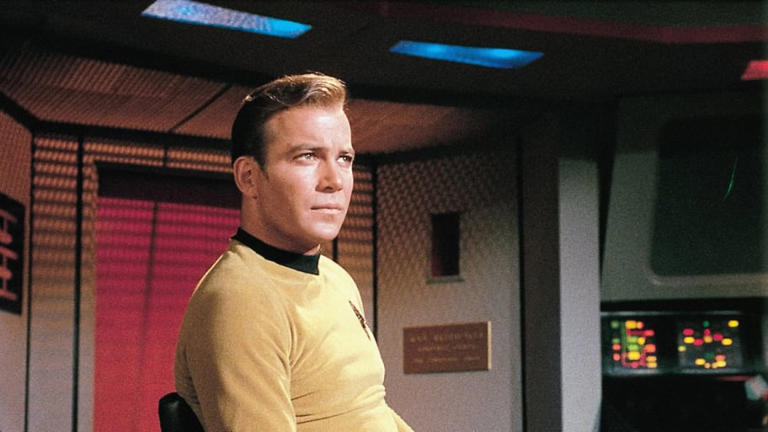

Transport ship
- View history

A Federation class J transport
In starship classification , a transport ship or ferry was a limited role starship , similar in function to a shuttle , but designed to carry people or supplies. Rarely, some transports were categorized as space cruisers . ( TOS : " The Way to Eden ")
More specialized transports, such as colony ships or colony transport ships , were designed to transport personnel for planetary colonization . ( TNG : " The Ensigns of Command ") Additionally, some vessels were also categorized as short-range transports . Dolamide was a material used for building these transports. ( DS9 : " Dramatis Personae ")
The Federation differentiated transports into one of two categories: commercial and non-commercial. ( TNG : " Inheritance ") Deanna Troi once suggested to the overwhelmed Janeway that she should perhaps consider serving aboard a transport ship, as " there's a lot less pressure there. " ( TNG : " Man Of The People ")
In the 2260s of the alternate reality , information on transport vessels was located in the Federation database . ( Star Trek Beyond )
In 2372 , Jake Sisko mused that he and Nog seemed to have spent most of the previous three years doing nothing, aside from playing dom-jot and watching the Bajoran transports dock. ( DS9 : " Little Green Men ")
In 2371 , Quark considered buying his own transport ship to keep up with his intentions of making Quark 's " the best place for Cardassian food and drink in this sector , " which would require him to " probably set up daily shipments from Cardassia . " ( DS9 : " Destiny ")
After Worf nearly killed his brother Kurn during the Mauk-to'Vor in 2372 , Captain Benjamin Sisko told Worf " I want you to tell me why I shouldn't put you on the next transport out of here. " ( DS9 : " Sons of Mogh ") A short time later, Worf, who was posing as Commander Sorval while performing espionage aboard the IKS Drovana , warned a curious lieutenant to " Leave us, or I shall have you stripped of rank and sent home in a transport! " ( DS9 : " Sons of Mogh ")
In the late 24th century , after the Federation learned that the Romulan sun was about to go supernova, Starfleet planned to use a rescue armada of ten thousand warp-capable ferries to relocate Romulan citizens . However, the armada was wiped out in the Attack on Mars . ( PIC : " Remembrance ")
- 1 Transports by race
- 2 Transport ships by designation
- 3.1 Background information
- 3.2 External link
Transports by race [ ]
- Al-Leyan transport
- Andorian transport
- Angosian police shuttle (or "transport vessel")
- Antidean transport
- Antares class
- Bajoran starship
- Bajoran transport
- Bajoran vessel
- Bolian transport
- Brenari transport vessel
- Brunali transport vessel
- Byzatium transport
- Cardassian supply ship
- Karemma transport
- Enolian prison transport
- Antares -type
- Apollo -class
- Bradbury -class
- Erewon -class ("personnel transport")
- Ptolemy -class
- SD-103-type
- Sydney -class
- Wallenberg -class
- Whorfin -class
- D'Kora -class
- Kantare transport vessel
- Klingon civilian transport ship (24th century)
- Klingon transport (22nd century)
- Kobliad transport
- Kobheerian transport
- Lissepian transport
- Malon transport ship
- Maquis transport ship
- Mulzirak transport
- Pakled trade ship
- Pakled transport
- Romulan transport
- Skrreean transport
- Suliban transport
- Tandaran transport
- Tellarite transport ship
- Transport shuttle ( Augment )
- Trill transport (2367)
- Trill transport (2372)
- Valerian transport
- Vanoben transport
- Yelikan transport
Transport ships by designation [ ]
- Artemis , SS
- Astral Queen
- Bradbury , USS
- Conestoga , SS
- Constantinople , USS
- Denver , USS
- Jenolan , USS
- Manila , SS
- Nightingale
- Robert Fox , SS
- Santa Maria , SS
- Sherval Das
- The Festoon
- Cardassian transport
- Charlie's transport
- Fraddock's transport ship
- Starfleet transport
- Courier ship
Appendices [ ]
Background information [ ].

Archer's model spaceship
The remote controlled model spaceship was described in the final draft script of ENT : " Broken Bow " as a model of an early 22nd century Starfleet transport.
A Vulcan transport was also included in an early story outline for Star Trek III: The Search for Spock . It would have delivered Dr. McCoy from the planet Vulcan to the USS Enterprise as the starship headed to the Genesis Planet , after the Enterprise had left him on Vulcan while on a return journey to Earth. ( Star Trek: The Magazine Volume 3, Issue 8 , p. 29)
In the first draft script of ENT : " Fortunate Son ", a Vulcan ship was scheduled to remand Ryan Cross to Earth for trial .
External link [ ]
- Transport ship at Memory Beta , the wiki for licensed Star Trek works
- 3 Ancient humanoid

IMAGES
VIDEO
COMMENTS
The ship featured in "Star Trek: Insurrection" was equipped with a cloaking device. Since this seems to be illegal according to the Treaty of Algeron, other ships of this type (if there are any) probably do not have cloaking. ... This is a small civilian ship, in service at the turn of the 25th century. Known ships SS Eleos XII NAR-59019 ...
Install Raid for Free IOS/ANDROID/PC: https://clcr.me/D22_TrekCentral and get a special starter pack 💥 Available only for the next 30 daysWith all the sh...
Starship Database. The database lists all canon starships and other spaceborne constructions of the Star Trek Universe by races and classes. Schematic side views and technical specs are included where available. The data is mainly based on the very episodes and on official sources. In some cases, however, obvious errors had to be corrected.
These are civilian vessels encountered in multiple missions, sorted by faction. ... List of civilian ships. Edit VisualEditor View history Talk (0) These are civilian vessels encountered in multiple missions, sorted by faction. ... More Star Trek Online Wiki. 1 Lore; 2 Playable starship; 3 List of canon starships; Explore properties. Fandom
Memory Alpha states that this newcomer Star Trek ship is a Kaplan F17 Speed Freighter, a class of civilian ships equipped with phasers and shields but a whole lot of hologram capacities. Not to forget, it is the only entry from Star Trek: Picard. 21. USS Franklin (NX-326)
A civilian was any non-military, non-law enforcement or non-Starfleet personnel member who went about their everyday lives in the presence of the aforementioned. In 1930, James T. Kirk claimed that a American missionary who lived near young Spock was also a skilled plastic surgeon in civilian life, and thus able to help after Spock got his head caught in a mechanical rice picker. (TOS: "The ...
I would also speculate a civilian could get a (small-ish, at least) ship by replicating the components and building it themselves. While I suspect walking up to an industrial replicator and saying "one shuttle please" would fail, either due to complexity or resource allocation, if you replicated pieces of it over time (a chair today, an EPS conduit tomorrow), assembly could be sufficiently ...
The following is a list of starship classes operated by the Federation. Because of the strong connotations with the real world United States Navy, Star Trek: The Original Series Producers Gene Roddenberry and Robert H. Justman (a World War II navy veteran himself) had imbued Starfleet with (The Making of Star Trek, p. 112, et al.; These Are the Voyages: TOS Season One, 1st ed, pp. 28-29; see ...
The imposing task force led by Captain Riker above Coppelius was composed of Inquiry-class vessels, including Riker's own U.S.S. Zheng He.Representing the most up-to-date Federation design of the 24th century, the reinstated captain described these ships as the toughest, fastest, and most powerful ones that Starfleet had ever produced up until that time.
The Class C shuttlecraft was a commonly used Starfleet and civilian shuttlecraft from the mid-23rd century through the late-24th century. From the mid-2230s to the mid-2250s, Class C shuttlecraft were utilized by Starfleet and were standard across the fleet, including on starbases and Crossfield-class, Walker-class, and Constitution-class ships. This type of craft was also used by the Imperial ...
Giant transports were the first high-speed, long-range, high-capacity transport ships to enter service with Starfleet and civilian services. The class heralded a new era of interstellar transportation and commerce in the Federation, establishing stronger political and economic bonds between the far-flung member worlds. The Age of Imperialism.
Civilian Ships Category page. Edit VisualEditor View history Talk (2) Alphabetical list of civilian vessels encountered throughout gameplay: Subcategories. This category has only the following subcategory. ... Star Trek Online Wiki is a FANDOM Games Community. View Mobile Site
In the 24th century, moreover, Oberth-class starships are not only still in use, but even new ones seem to have been commissioned, as e.g. the USS Cochrane NCC-59318 (Star Trek Encyclopedia). It is hardly believable that starships are constructed based on the same design for more than 150 years, while on the other hand there is a great variety ...
Not a full break down of each ship but a look at the most rare of sharships in Trek, the Civilian one.This Channel is made to entertain and share the joy I h...
Alphabetical list of civilian vessels encountered throughout gameplay: Check out the new Star Trek: Prodigy gear from the Prodigy Lock Box and more! Please report any performance or caching issues in this thread in the Star Trek Online Community Discord.
The Federation operated numerous varieties of starships. While the Prime Directive was observed aboard Starfleet vessels, this was not true of civilian ships. (TNG: "Angel One") Unnamed Federation starships Star Trek Ships: Expanded - UFP: Starfleet and Prehistory at The STArchive
The Civilian duty officer department consists of personnel who serve aboard starships, but are not officers or enlisted personnel of Starfleet, Klingon Defense Force, Romulan Republic or Dominion. ... Star Trek Online Wiki is a FANDOM Games Community. View Mobile Site
The Star Trek Encyclopedia says that the USS Antares NCC-501 (TOS: "Charlie X") could be the class ship of the civilian/alien Antares class - a suggestion which is both doubtful and outdated. There is nothing that would link the TOS ship to the USS Hermes, so the USS Antares from TOS (below) causes the least trouble if it is of any other class.
The second issue becomes apparent when looking and the enormous scale of the ship. It has been estimated that the ship contains 8.9 million square feet (or 827,000 square meters) of habitable space.
A list of Federation starship registries Only NA, NX and NCC registries are included. It has never been canonically established what the letters "NCC" or "NX" stand for, but in the 23rd and 24th centuries, "NX" (not to be confused with NX-class) seemed to be used to designate experimental or prototype starships while "NCC" designated normal production vessels. The use of "NCC" as a prefix for ...
I would assume that civilian starships are just as varied and diverse in Star Trek's galaxy as civilian sailing vessels are here on our own planet. Mostly small, short-range transports, larger recreational vessels, even larger transports, cruise ships and resource extractors (EG asteroid mining = fishing); and then really, really big transport ...
William Shatner's Captain Kirk made his final appearance on Star Trek: Generations. He, Montgomery Scott (James Doohan) and Pavel Chekov (Walter Koenig) joined the Enterprise-B for its inaugural ...
In starship classification, a transport ship or ferry was a limited role starship, similar in function to a shuttle, but designed to carry people or supplies. Rarely, some transports were categorized as space cruisers. (TOS: "The Way to Eden") More specialized transports, such as colony ships or colony transport ships, were designed to transport personnel for planetary colonization. (TNG: "The ...